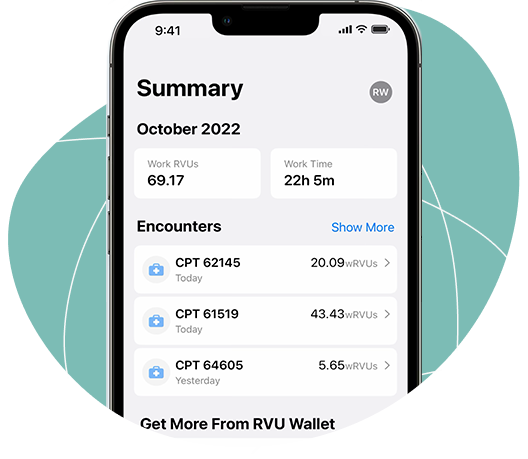
Although the rate of obesity in America continues to rise, the number of bariatric procedures performed each year remains relatively flat. In Georgia, like most states, comprehensive weight loss programs are predominately, if not exclusively, located in metropolitan areas. This leaves patients in more rural communities without access to care unless they travel considerable distances.
Traveling to access a weight loss surgery program presents its own challenges, such as increased costs for the patient and difficulty obtaining long-term follow-up. The healthcare gap in rural America drove Live Healthy MD's program to expand into rural, middle Georgia—obtaining a bariatric Center of Excellence in 18 months.
We had one goal: to address the obese market within this community by establishing a comprehensive weight loss program. In this article, we will outline the steps we took to take a rural community hospital from zero to COE in 18 months.
1. Identify a rural hospital with key demographic features
In my experience, the ideal hospital facility for a rural weight loss surgery program consists of a location within a reasonable driving distance from a surgeon's existing program (somewhere between 60 to 80 miles, but not more than 150 miles).
If your new bariatric program is too close to an existing program, you will probably not tap into a new market. Instead, you will just treat the same patients you otherwise would in a location closer to their homes.
On the contrary, managing that program may become unwieldy if the new bariatric program is too far away.
Other criteria I consider critical in the evaluation process are the size and type of hospital in the identified location. B-level hospitals seem to be ideal for a weight loss program startup. I consider B-level facilities to be a hospital with a reasonable bed count (50 to 100 beds), ER visits north of 40k/yr, and few (if any) hospital staff subspecialties yet still capable of providing most services (endoscopy, ICU, advanced imaging, etc.).
The number of ER visits each year tends to be a good indicator of the size of the service area that the hospital draws from. The primary service area might be relatively small from a population standpoint, yet the secondary service area from surrounding counties is relatively large and capable of supporting a new program.
Once the specific facility is identified, we need to ensure that the location can satisfy the ASMBS COE requirements, such as an ICU, endoscopic and imaging capacities, and access to necessary medical specialties.
2. Create a business plan and value proposition for the hospital's leadership team
Now that a potential hospital candidate has been identified, the next step is to contact the leadership team (CEO) and assess the level of interest in starting a new program. This involves developing the business case and demonstrating the value proposition to the team.
In my experience, the leadership team is usually highly interested in anything they can do to generate a new service line with a relatively low cost to start up.
Weight loss surgery is an ideal service for these facilities since it has a low cost to start up with usually little-to-no new equipment needed. Bariatric programs also have an excellent contribution margin since the surgeries don't require expensive disposable equipment or implants, and most patients are short stay visits with high DRG reimbursements.
3. Create value for the existing general surgeons and hospital staff
Once you get the buy-in from the hospital leadership, the main challenge will be setting up the bariatric surgery call schedule. Since we are discussing starting a new program as a satellite office to an existing COE program, it's unlikely that there will be 24/7 call coverage from one of the program surgeons.
By default, this will require the participation of the existing general surgeons on staff. I found this to initially be challenging; however, once the local surgeons understood that they would rarely have to manage a bariatric patient due to transfer agreements, they became more comfortable supporting the new bariatric program.
In our existing rural model, our bariatric surgeons participate in and utilize the acute care general surgery call schedule as the bariatric call schedule. In this manner, the local general surgeons had the benefit of sharing general surgery call in exchange for taking care of the bariatric patients in the absence of the operating weight loss surgeon.
Ultimately the ability to move forward with developing this service will hinge on cultivating the buy-in from the existing surgeons. Without their participation and support, the new bariatric program will most likely not take off.

4. Hire a program coordinator and put together the COE requirements
The program coordinator is one of the most critical aspects of a successful bariatric program. This individual must have a self-starter personality, be highly organized, and preferably be a long-time local of the community.
This individual will be responsible for getting the program up and running from its inception. They will make up the entirety of the bariatric program, from the intake coordinator to the patient navigator, as well as the marketing team.
The program coordinator will also gather all of the Center of Excellence documents to ensure the program meets COE requirements.
At Bariatric Centers of America, we have a playbook of all the COE requirements, including example templates, making your program startup less of a headache.
5. Set up a marketing plan
Finally, once the program has been established and all the logistical pieces are in place, you want to market the program to the local community. We found connecting with the local physician network the most effective method of getting the word out about this new service line. We would provide their offices with brochures to place in their waiting room and hand out to prospective patients, generating buzz about this new bariatric program.
We would also recommend reaching out to the large employers in the community and setting up a company seminar or luncheon to educate them about the new program. A bonus is if that employer’s insurance plan covers bariatric surgery—you have an easy referral pipeline.
Similarly, we focused heavily on digital marketing techniques to target prospective patients. There are methods to attract new patients without spending top dollar for traditional or paid web ads. BCA uses a targeted approach to marketing that increases volume for bariatric programs.
Conclusion
We were able to see great success with the startup of the Fairview Park bariatric program, going from zero to COE in 18 months. We were primarily able to do this through a streamlined startup, the buy-in from key individuals, and a robust marketing approach.
Starting a new bariatric program doesn’t have to be a headache. At Bariatric Centers of America, we have the tools to make your program startup easy and efficient. Contact us today and let us help you get your program to COE status in less than two years.
























